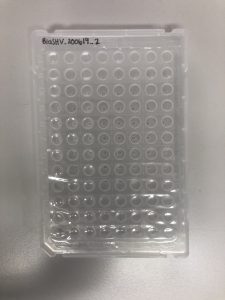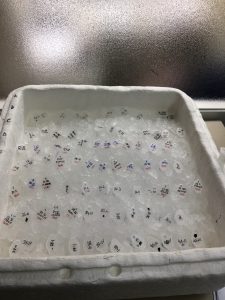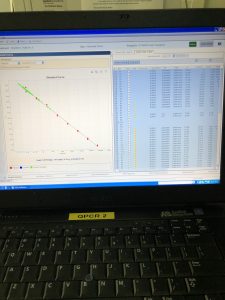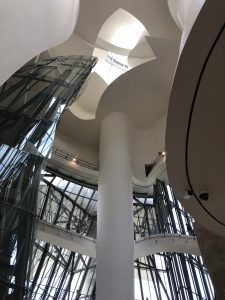
Processed with VSCO with f2 preset
Written by Kelsey Kolar
Step 3 of antibiotic resistance gene analysis is in full swing starting my 6th week at IPLA-CSIC. Last Friday morning, Sylvia (one of my mentors) showed me and a few other students how to prepare and run qPCRs. That afternoon I received my own resistance gene, BLASHV, and 6 pages of samples. Since Friday I have run qPCRs on the samples of premature and full-term infants. To ensure our Ct, Ct threshold, DNA quantity, and Melting Temperature of DNA are accurate and reliable, we run duplicate qPCR plates. Each plate contains known standard concentrations of our gene of interest to produce a standard curve, 2 wells of negative controls containing no DNA, and then our unknown samples.
After 4 days of qPCR and result collection, Sylvia and I sat down to determine how to analyze data and what important parameters are. I learned how to use Ct values to determine our limit of detection, calculate our slope per plate, and analyze Ct values. Result analysis is the most important factor of the experiment. Although I am learning new procedures and performing interesting tasks, the key to all research is what the data means and how it can be used to solve problems and create solutions! I am excited and eager to continue running more qPCRs and result analysis to help the IPLA team complete their project!



Outside of the lab, I returned to Bilbao for the weekend. During my time in Bilbao, I visited the Guggenheim Museum, the Fine Arts Museum, the lovely neighborhoods and vegan food of Abando, Indautxo, and Casco Viejo! Bilbao will forever be a city I am drawn to, hopefully, I’ll return again one day.
